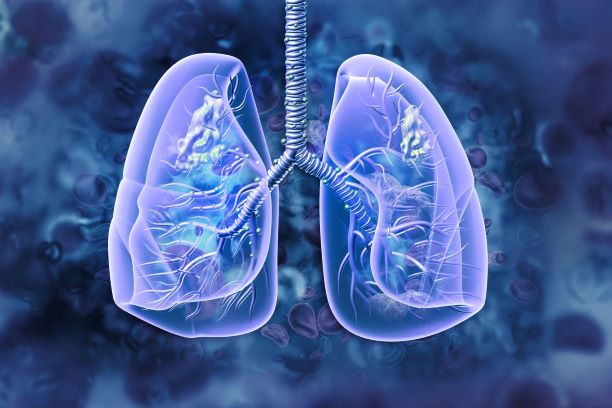
Lung cancer is the third most common cancer in the U.S., according to the American Cancer Society. Both men and women die from lung cancer more than any other type of cancer. Like other cancers, there are few symptoms at initial stages, but early detection greatly improves chances of survival.
Lung cancer in its initial stages starts as a nodule, a small mass in the lungs. Although most nodules are benign, the cancerous ones if left undiagnosed or untreated, they will increase in size and spread outside the lungs. However, if nodules are detected early using a low-dose chest CT scan (LDCT), evaluation and treatment can improve survival.
Because LDCT is safe, with radiation exposure slightly higher than an X-ray or mammogram,1 the National Cancer Institute piloted a nationwide study titled ”National Lung Cancer Screening Trial” to determine if LDCT could be used widely as a screening method. The study started in 2002, enrolled over 53,000 men and women 55-74 years old with a history of smoking. The study results published in 2011 showed a 20% reduction in death from lung cancer in those screened annually with low-dose CT scans.2 Further analysis showed that for every 256 participants screened, lung cancer was detected early and prevented death in one individual. While the benefit of early screening is obvious, only about 12% of eligible individuals are currently being screened for lung cancer.
As covered by most insurance companies, current eligibility for lung cancer screening includes people 50-77 years old who either are active smokers for 20-pack years or have quit smoking within the past 15 years. Pack years are calculated by multiplying the number of packs of cigarettes smoked per day by the number of years smoked. For example, smoking one pack per day for 20 years or half a pack per day for 40 years, both amount to 20-pack years smoking.
If a nodule is found on the screening CT, it warrants a quick evaluation. Time and again, it shows that a delay in starting treatment for lung cancer results in reduced chance of survival3 and a higher chance of cancer recurrence, even after treatment.4 With this in mind, Northside Hospital Cancer Institute started the Lung Nodule Clinic (LNC), the primary goal of which is a timely diagnosis and treatment of any suspicious lung nodules.
Patients are self-referred or referred by their providers to the LNC for evaluation of lung nodules or any other suspicious lung lesions found on screening LDCT or other radiographic imaging. A physician in the LNC evaluates patients; multiple sub-specialists, including pulmonology, thoracic surgery, medical oncology, interventional radiology and radiation oncology discuss their cases in detail at the LNC conference. Each patient is assigned an oncology nurse navigator, who will communicate with the patient to coordinate and ensure all the necessary testing, imaging studies, consultations and procedures recommended by the LNC team are done in a timely and organized manner for optimal outcomes.
After patients have discussed their diagnostic and treatment pathways, they will follow up with the appropriate subspecialists from the LNC until completion of therapy.
Currently, Northside Hospital Lung Nodule Clinics are operating in Canton, Cumming and Lawrenceville. Learn more about Northside Lung Nodule Clinics.
References:
- RadiologyInfo.org. "Radiation Dose." Accessed October 31, 2022. https://wwwhttps://www.radiologyinfo.org/en/info/safety-xray.radiologyinfo.org/en/info/safety-xray.
- National Lung Screening Trial Research Team, Aberle, D. R., Adams, A. M., Berg, C. D., Black, W. C., Clapp, J. D., Fagerstrom, R. M., Gareen, I. F., Gatsonis, C., Marcus, P. M., and Sicks, J. D. "Reduced Lung-Cancer Mortality with Low-Dose Computed Tomographic Screening." New England Journal of Medicine 365, no. 5 (2011): 395-409. https://doi.org/10.https://doi.org/10.1056/NEJMoa1102873.
- Bott, M. J., Patel, A. P., et al. "Pathologic Upstaging in Patients Undergoing Resection for Stage I Non-Small Cell Lung Cancer: Are There Modifiable Predictors?" Annals of Thoracic Surgery 100, no. 6 (December 1, 2015): 2048-2053. https://doi.org/10.1016/j.athoracsur.2015.05.https://doi.org/10.1016/j.athoracsur.2015.05.100.
- Heiden, B. T., Eaton, D. B., Engelhardt, K. E., et al. "Analysis of Delayed Surgical Treatment and Oncologic Outcomes in Clinical Stage I Non–Small Cell Lung Cancer." JAMA Network Open 4, no. 5 (2021): e2111613. https://doi.org/10.1001/jamanetworkopen.https://doi.org/10.1001/jamanetworkopen.2021.11613.11613.

